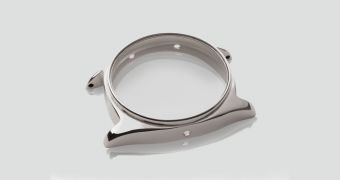3D printers mostly work with plastics, but there are some that can handle metal, and EOS is one of the foremost names in that area. True to form, the company has formally revealed some new goodies for implant and prosthesis makers.
Technically, 3D printing technology can be used for various things, like casts, bone/body part models meant for practice surgery runs, etc.
However, the greatest achievements, so far, have been in the realm of implants, from small mending procedures to a new hip that freed a teenager from pain and the impossibility of walking under her own power.
They don't all get made for humans either. Implants for dogs have also been made by means of CAD models and 3D printers.
Those implants are only as strong and long lasting as the material they are made from though, and it might be a good idea to come up with alloys that work better in 3D printing. Materials can wear on the inner workings of the contraption after all.
So here we are, beholding two materials made by EOS, the EOS StainlessSteel 316L and EOS Titanium Ti64ELI.
The former is corrosion-resistant and biocompatible, meaning that the body won't reject it by thinking it's an infection or tumor.
Intended for use with the EOSINT M 280 metal laser-sintering system, it has a chemical composition compliant with the ASTM F138 specification (Standard Specification for Wrought 18Cr-14Ni-2.5Mo Stainless Steel Bar and Wire for Surgical Implants UNS S31673).
According to EOS, the new steel is good for endoscopic surgery, surgical instruments and implants of various kinds. Hollow stainless steel objects should come out particularly well too, like eyeglass frames or watch cases (so it's not just medicine that will benefit). Yachts and aerospace industrial parts are another possible use.
The other material, EOS Titanium Ti64ELI, is a light material that, like the steel, is biocompatible and corrosion-resistant. It is very pure, making it even better suited for implants than the other one. It should be used with the EOSINT M 280 (400 Watt) metal laser-sintering 3D printer.
In addition to the hip implant already mentioned, titanium printing has been used to restore the facial structure of a UK patient. No doubt, the news of more lives saved or restored by 3D printing technology will increase in frequency now that these new materials have been created. In fact, by the time the ongoing year ends, we may have to welcome even more materials, and likely new 3D printers as well.

 14 DAY TRIAL //
14 DAY TRIAL //